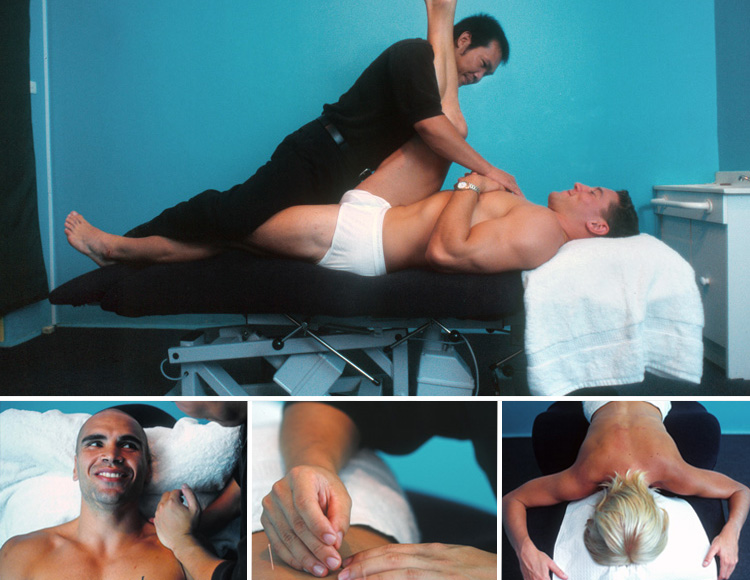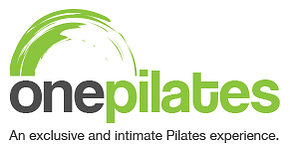

Philosophy
At Point Therapy, we know there are many effective treatments for sports injuries and pain disorders.
We know no single treatment is wholly effective in most conditions. We know there is considerable variation in individual responses.
More importantly, we understand the treatments that we use, how to combine them and when to apply them.
Our objective is to give comprehensive treatments with optimum effects. Our aim is to give our clients the fastest and most complete recovery possible.
The treatments we use at Point Therapy include:
- Electro-Acupuncture
- Therapeutic Massage
- Infra-Red
- Ultrasound
- Transcutaneous Electrical Nerve Stimulation
- Rehabilitation
- Laser
- Stretching
- Rotation and Mobilisation
- Strapping and Taping
- One Pilates
Our clinic specialises in:
- Back and Neck Pain
- Sports Injury and Pain Disorders
- Injury and Strength Rehabilitation
- Stress and Migraine Management
- Body and Energy Work
- Poor Posture
- Computerised Orthotic Assessment and Prescription
- Individualised and Group Yoga instruction
- Individualised and Group Pilates sessions
Our Treatments
Electro-Acupuncture (EA)
EA generates similar results to TENS, the only difference is that acupuncture needles are used to directly stimulate or manipulate into the muscles, tendons and/or ligaments. It elicits a much stronger effect than the conventional TENS, thus pain reduction is of longer duration.
EA can be used for:
- Acute injuries and chronic pain
- Muscle spasm
- Trigger points
- Swelling/Oedema
- Inflammations such as tennis elbow, shoulders and tendinitis
- Skeletal fractures
Therapeutic Massage
Therapeutic Massage involves direct physical pressure on the soft tissues of the body, especially muscles, tendons and fascia. This requires precise anatomical knowledge, palpation skills and the ability to distinguish between affected and unaffected tissue.
Back to topInfra-Red
Infra-Red has numerous benefits, and uses including:
- Reduced muscle spasm
- Chronic pain and swelling
- Increase the extensibility of collagen tissue
- Increased circulation
- A sedative effect on superficial nerve endings to produce analgesic effect
- Lowering of blood pressure Increased respiration and perspiration
- Loss of salt, water, urea and other nitrogenous substances
Ultrasound
Ultrasound has been utilised for pain and other pathological conditions through the ability of soundwaves to introduce molecules of chemical substances through the skin.
The ultrasound waves penetrate as deep as 4 to 6cm into the tissue. Ultrasound can be used for:
- Muscle, nerve and connective tissue problems
- Local inflammation and pain
- Muscle spasms and joint contractures
- Speeding up the healing process
Transcutaneous Electrical Nerve Stimulation (TENS)
TENS is commonly used to treat sports injuries and pain disorders. A current is directed across the skin to cause electrical stimulation.
The electrical currents generate a response from the central nervous system that activates the release of endorphins and other physiological changes.
TENS can be used for:
- Acute injuries and chronic pain
- Muscle spasm Trigger points
- Swelling/Oedema Inflammations such as tennis elbow, shoulders and tendinitis
- Skeletal fractures
Rehabilitation
Most musculoskeletal disorders or injuries require active rehabilitation. The primary aim of rehabilitation is to enable the patient to recover with full function in the shortest possible time.
Without rehabilitation, the patient is prone to re-aggravate the condition, muscular functions are hindered carrying out activities and the pain often moves to another part of the body.
There are many important components of rehabilitation. Point Therapy uses the following:
- Muscle conditioning
- Flexibility
- Functional and corrective exercises
- Correction of abnormal biomechanics
LASER
LASER stands for Light Amplification by Stimulated Emission of Radiation. The reported physiological effects of LASER are:
- Decreasing Pain
- Decreasing Inflammation
- Increasing Circulation
- Iincreasing Collagen Synthesis
- Increasing Granulation Tissue and
- Increasing Nerve Regeneration.
LASER can also be used to stimulate acupuncture points for pain management. The following conditions may benefit from LASER treatment of pain management:
- Tendinitis Arthritis
- Trigger points
- Soft tissue injuries
- Wound healings
Stretching
Stretching consists of two types of stretching exercises that can be performed to increase flexibility, recovery rate, reduce injuries and enhance athletic performance:
Static stretching consists of holding stretches for approximately 30 - 60 seconds, without any discomfort.
Proprioceptive Neuromuscular Facilitated (PNF) stretching is performed to increase the range of motion of a particular group of muscles. This is achieved by alternating contraction and relaxation of agonist and antagonist muscles.
Back to topRotation and Mobilisation
Rotation and mobilisation involves an assessment where the practitioner isolates a specific joint or spinal level and passively feels the movement available at that joint.
The practitioner will then treat any stiff joints or spinal levels with gentle movement to relieve the stiffness and return the joint to its proper functions. If the joint or spinal level moves excessively, specific stabilisation and strengthening exercises must be initiated.
It is used for the following:
- Joint stiffness
- Degenerative changes in articular cartilage
- Muscle atrophy, weakness and tension surrounding joints
- Frozen shoulders
- Stiffness of the lower back, neck and hip
Strapping and Taping
Strapping and Taping is used to restrict unwanted, excessive or potentially harmful motion.
It is used for prevention during high risk activities and for rehabilitation to assist in the healing stage and re-aggravation of injuries.
Back to topRun by an experiencd STOTT PILATES® instructor Snow Nah, One Pilates offers unique programs to aid injury rehabilitation and increase fitness performance. Book today for the most EXCLUSIVE and INTIMATE Pilates Classes in Sydney.
0497 811 390
info@onepilateslounge.com
www.onepilateslounge.com

